Tashkent to Kashgar - China
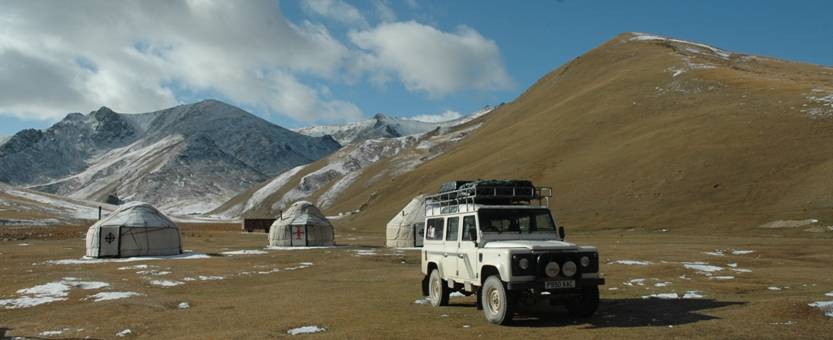
We left Tashkent a little better rested and made our way South and East, eventually driving through the Fergana Valley to the border with Kyrgyzstan at Osh. The Fergana Valley is a stunning slice of rural idyll, with lush farmland and mountains occasionally glimpsed in the distance. All this apparent tranquility has not always been the reality, however our journey was relatively incident free. Only the smog posed any kind of irritation, this was unlike anything we had experienced: a thick blanket of foul smelling fog that can only be explained by the Central Asian fondness for Shashlik roasted on an open wood fire.
The Fergana Valley is also home to one of our journey’s more bizarre international borders, cutting across the valley and isolating Kyrgyz Osh from the rest of the Uzbek population. Fortunately, cross border trade is apparently still flourishing in spite of restrictions, some report that homes built on the border provide useful front-back door trade routes during the occasional border closures. Unfortunately our drive took longer than we thought and we ended up approaching the border in darkness, something that we usually avoided. The tension was further increased when we came up to what looked like just another police check point until we saw the men in fatigues, balaclavas and AK-47s. Definitely not what we had grown used to, even in central Asia: we hesitated for only a second before resorting to our usual regal tactic of confident smiles and waves as we continued to drive past the static vehicles and threatening firepower on either side. Several yards past with still no reaction from the goons we thanked our lucky Landrovers and continued on our way to the border.
Expecting another Central Asian border story, we were surprised by the apparently relaxed atmosphere on both sides of the gates. We accompanied a truck as the only other border business that evening: money appeared to change hands at customs, however we seemed to be exempt from that particular payment. Once on the Kyrgyz side we were delayed momentarily by a security official who had locked his keys in his office and a computer system that refused to boot up. It also took a certain amount of searching to find a customs official that would sign the necessary import documentation for the car. Once found he could not locate his forms but seemed satisfied with the spare that we had picked up in Georgia, still with its import/export stamps from that country.
Far from being pleased by this relaxed attitude to border control we were left a little disconcerted and apprehensive of how any potential omissions might play at any of the inevitable police road blocks, or when we tried to bargain our way across at the exit. We need not have worried: our highly tuned travelers’ paranoia was unnecessary in Kyrgyzstan, an island of rationalism in an ocean of authoritarianism.
We stayed the night in Osh, Ruth achieving a 50% discount on the price of the room, which is a considerable achievement given our tattered nerves and the negotiating skills of Central Asian businessmen. Apart from this it was not our best stay: I got ill with what later turned out to be Giardia, while Ruth discovered that our four bank cards had been whittled down to one. We were used to banks’ inflexibility from previous travelling so had hard cash to spare, however it was still irritating to be left high and dry by banks we had searched out and kept informed prior to the trip.
We spent the following two days leaving the tarmac road behind and heading across passes and through extraordinary folded landscapes to the town of Naryn, a day or so’s drive from where we would be crossing into China at the Torrugart pass. After our experience of Central Asia it did not take much distance to feel as if things had changed. As soon as we were out of the Fergana valley people’s dress, their looks, the landscape and the culture all made a transition. We soon passed our first Kyrgyz shepherds, their yurts a short distance on. The local dress took some getting used to, in particular the hats worn by the men: tall and brimless, they are made of felt and finely decorated, quite out of keeping with their otherwise sober clothing.
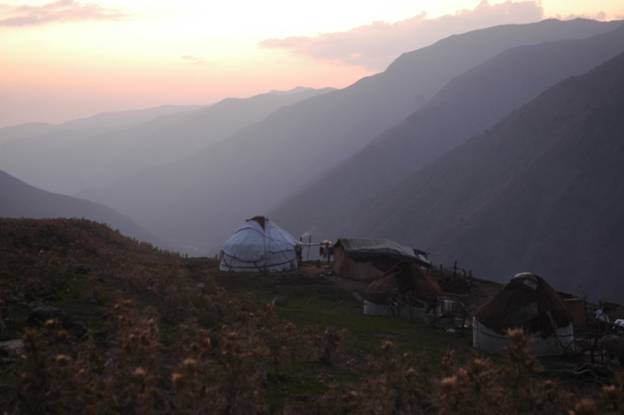
We spent the night of the drive almost at the peak of the precipitous track that crosses a 3200m pass. This was part of our aim to gather as much time at altitude as possible before we crossed into China and headed up onto the XinJian/Tibet highway, the highest road in the world with a considerable time spent hovering around the 5000m mark. Apart from seeking out some thin air we also went hunting for Diamox, a drug that accelerates the growth of red blood cells. We thought that this might be a challenge for a small town such as Naryn, however we were happy to find that pharmacies were the dominant business in the region, certainly outnumbering decent grocery stores. After our 7th pharmacy we had emptied the town of Diamox as well as buying various other antibiotics to deal with our withering health after a month of our Central Asian diet of mutton kebabs, dust and plov.
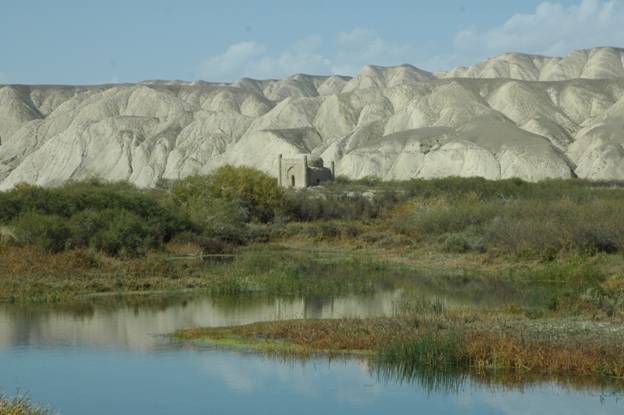
After a couple of nights in a homestay in Naryn we headed up to Lake Song Col, an immense body of water at 3000m altitude, completely surrounded by low mountains. Below the mountains the lake sits in a wide, flat valley with little vegetation other than grass to break the views. It is an empty and hauntingly beautiful landscape. We arrived late in the year and many of the shepherds had moved on, descending out of the isolated Song Col valley to warmer pastures for the winter. We still saw a few isolated yurts, perhaps 4 or 5, either on the flat land surrounding the lake or close to good grass and streams behind. Apart from these few signs of people we were completely alone, so when we woke up after our first night’s camping to 4” of fresh snow we started to worry that we had misjudged the seasons and might get embarrassingly stranded on the wrong side of the steep pass to the lake. Fortunately the day time sun is still strong enough in early October to melt any overnight snow and free up the road back down.
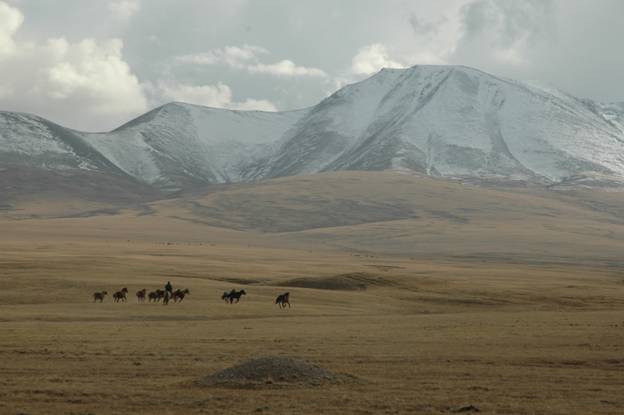
After Song Col and another night in Naryn we started the drive towards the Chinese border, hoping to stay in Tashrabat, once an important silk road caravanserai and now a short distance from the modern trade route between Kyrgyzstan and Kashgar. We gave a lift home to a lady we met on the way and were invited in for chai and curds with her family in return. Just before leaving a work colleague of her son woke up from his vodka-snooze and decided that we needed a guide to show us the way to Tashrabat. In the confusion we ended up taking both work colleagues the 10km or so, they shouting and miming nice things about the car and drivers as we went, only to turn around once there to give them a lift back home again when it turned out they would be stranded. On the return journey we spent a lot of the time stopping to buy vodka from householders and workers along the way. We had been warned by our friends in Naryn that “Kyrgyz are usually very quite people, but after vodka…”
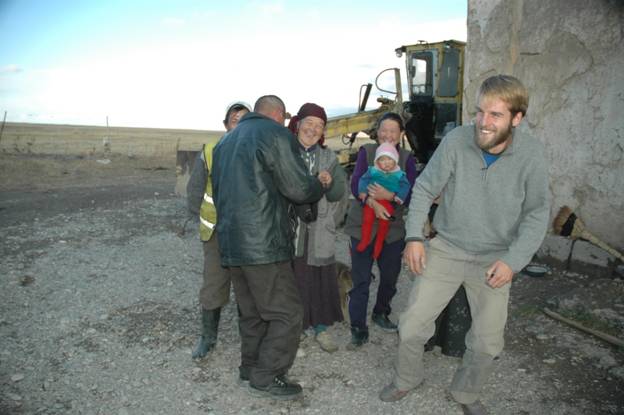
Once in Tashrabat we spent a short time wandering around the Caravanserai: now a cold and empty stone building, its domed roofs rebuilt recently to save them from ruin. Traders and travelers would have slept on stone benches in the many cells off the main hallway leading to the main room and mosque at the back of the building. We got to stay the night in a Yurt, an elaborate shepherd’s tent built for nomadic comfort in spite of temperature extremes. Each yurt is beautifully built of different layers of plain and coloured felt and canvas for insulation, decoration and weatherproofing. These are wrapped tightly around a circular wooden frame using ropes that are tied to a series of iron stakes hammered into the ground. Heating and cooking is provided by a simple steel plate stove burning poo accumulated from the wintered animals and then dried. Of course, when the stove goes out the temperature still drops very fast.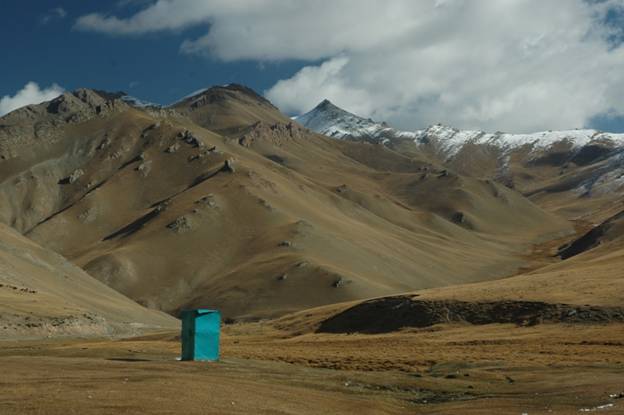
We ate meals with the family, Naizira, her husband, father, son and two daughters. The family run a tourism business with the yurts during summertime alongside shepherding. Naizira also spends winter in the valley with her family and neighbours, which must be a cold but cosy existence for 5-6 months of the year. After eating dinner at her house on the second night she kindly invited us to spend a winter’s month with her. We would teach her English and computers in return for accommodation and as much skiing and local cooking as we could wish for. When sitting in their small home, built rather like a Scottish black house, with the family around it seemed like a very attractive invitation.
Instead we trudged out into the darkness and spent that night within sight of the outer Kyrgyz checkpoint. Once the army had checked we were legitimate travelers we were allowed to catch some sleep as the car gradually frosted from the inside out.

The actual crossing was exhilarating, we had been woken at all times of the night by passing trucks, catching up on cross-border business following a 10 day Chinese holiday, and we spent all day overtaking them. The majority we passed in a queue at the border, however some posed greater challenges as they jack-knived across the road in the snow that led up to the pass. The Landy had no such trouble and coped well with the snow and the 3700m altitude. Apart from giving assistance to stuck truckers we paused only once to take waters from a naturally carbonated and very ferrous spring part way up the Kyrgyz side.
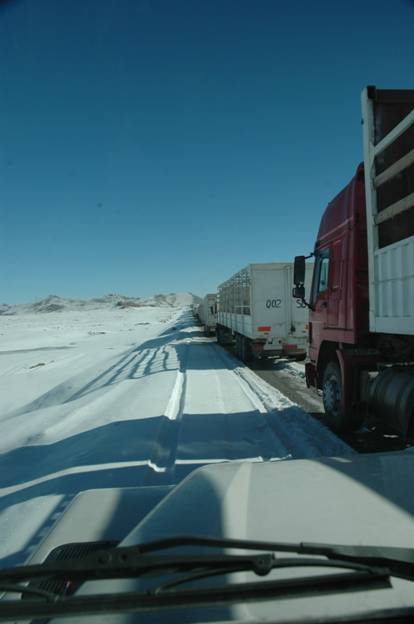
Once over the pass we met our guide for the next month, Leon, and our local Uigher guide, XaiNiLa, who was to take us around Kashgar. Leon is in his early 20s and appears to be using guiding as a means of discovery and forgoing his inevitable descent into adult hood. His local knowledge was extremely sketchy for a guide, however he would be enduringly cheerful company for the next 4 weeks.
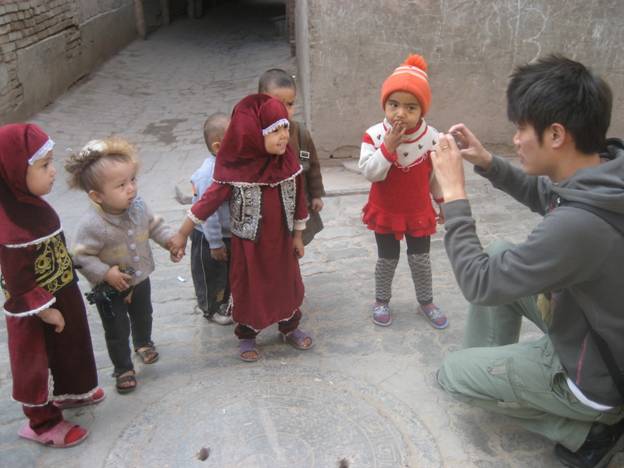

Last Updated (Friday, 04 December 2009 05:47)

Heidi & Mike
xx
Good to see an update - although the occassional EMails at least let us know you are safeish! Perhaps Niles and I will try to follow your route by air one day......but the paperwork would double!
Remaining jealous (and keep feeding John!)
Mike